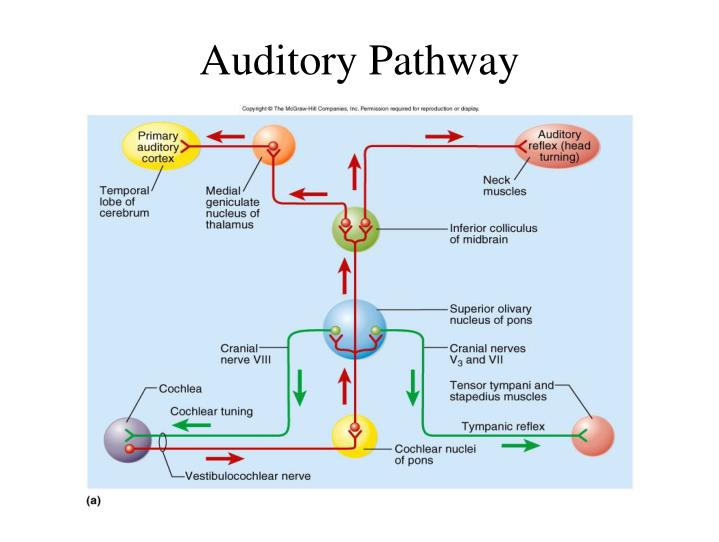
Bottom: Example frequency response profiles and PSTHs of best frequency (BF) responses from a unit recorded in A1 of an awake, passively listening mouse, illustrating tone responses (80 dB SPL) with (orange) or without (black) concurrent whisker stimulation. These results demonstrate that the auditory midbrain and thalamus have essential roles in integrating somatosensory and auditory inputs and in mediating communication between cortical areas that belong to different sensory modalities.Ī Top: Schematic of recording setup. We also show that a parallel crossmodal corticothalamic pathway from S1 to the medial sector of the auditory thalamus allows for somatosensory facilitation of auditory responses in thalamic neurons that do not project to the auditory cortex. Dissecting the underlying circuitry, we found that this suppression originates in the primary somatosensory cortex (S1) and can be implemented via S1-recipient neurons in the auditory midbrain, which inhibit sound-driven activity in the auditory thalamocortical system. We show that somatosensory inputs exert a powerful influence on processing in the auditory system, which is independent of brain state and takes the form of divisive suppression in the auditory thalamus and cortex. In this paper, we investigate whether subcortical sensory circuits play a role in shaping multisensory processing in cortex. This, however, ignores the potential contribution of ascending inputs from the thalamus, which may also provide a source of multisensory input to primary cortical areas, such as A1 11, 19, 20, 21, 22, or the possibility that early sensory cortical areas may communicate via a combination of corticofugal and thalamocortical pathways 23, 24. Because visual, auditory and somatosensory cortices innervate each other and connect with higher-level, association areas 5, 7, 9, 10, 11, 12, 13, 14, most studies have focused on the role of intracortical circuits in multisensory integration 15, 16, 17, 18. The circuitry underlying crossmodal influences on processing in early sensory cortical areas is poorly understood. Suppression of sound-evoked activity in auditory cortical neurons by somatosensory inputs likely provides a mechanism for prioritizing the processing of tactile cues from nearby objects that require urgent attention. In the primary auditory cortex (A1), for example, visual or tactile stimuli can modulate acoustically-driven activity, most commonly by suppressing responses to sound in both awake and anesthetized animals 5, 6, 7, 8. Evidence for multisensory convergence has been found in nearly all cortical areas, including the primary sensory cortices. Inputs from the whiskers can enhance sound-induced defensive behavior 3 and neural mechanisms that give precedence to the processing of somatosensory information over cues from other modalities are likely to be advantageous to the organism’s survival.Īpart from specialized subcortical premotor nuclei, such as the superior colliculus, it is widely assumed that multisensory processing is most prevalent at the level of the cerebral cortex 1, 4. This is particularly important in animals that rely on their whiskers for detecting the presence and location of objects as they explore their surroundings 2. Unlike audition and vision, the sense of touch informs an organism exclusively about objects in its immediate vicinity. Furthermore, when the same event or object is registered by more than one sense, as is often the case, our chances of detecting and accurately evaluating its biological significance dramatically increase 1. Having multiple sensory systems, each specialized for the transduction of a different type of physical stimulus, maximizes our ability to gather information about the external world. Crossmodal corticofugal projections to the auditory midbrain and thalamus therefore play a pivotal role in integrating multisensory signals and in enabling communication between different sensory cortical areas.


Furthermore, a direct pathway from S1 has a facilitatory effect on auditory responses in higher-order thalamic nuclei that project to other brain areas. This suppression depends on the primary somatosensory cortex (S1), and is implemented through a descending circuit that links S1, via the auditory midbrain, with thalamic neurons that project to A1. We show that stimulation of the whiskers causes widespread suppression of sound-evoked activity in mouse primary auditory cortex (A1).

Much less is known about the role of subcortical circuits in shaping the multisensory properties of cortical neurons. Integration of information across the senses is critical for perception and is a common property of neurons in the cerebral cortex, where it is thought to arise primarily from corticocortical connections.


 0 kommentar(er)
0 kommentar(er)
